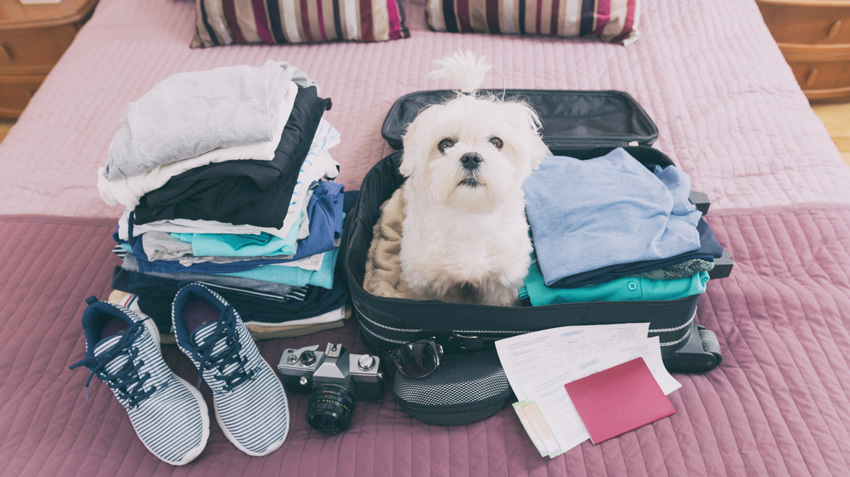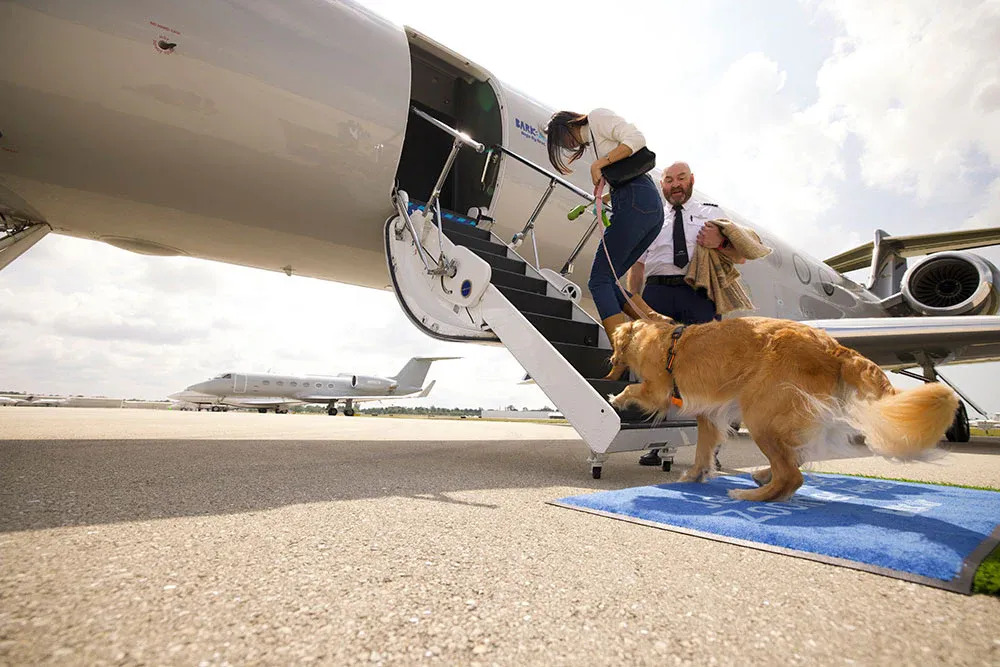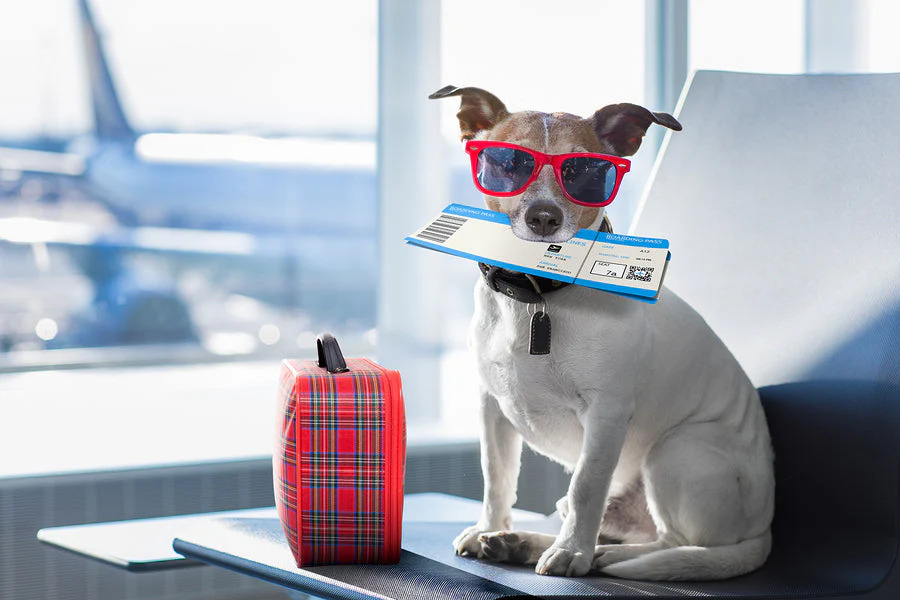Flying with pets in 2025 remains safe and acceptable. Airlines have implemented new pet policy rules and global legislation to support this. Always check the most recent pet travel regulations before booking your ticket. Airlines now offer better mechanisms for securing animals during flight. Most people feel confident flying with dogs thanks to these improvements. Above all, prioritize your pet’s health and comfort.

Flying with Pets: Safety & Feasibility
Safety Standards
You want your pet to be safe while you’re in the air. And in 2025, airlines are taking that seriously. Air carriers now have strict safety policies for pets, designed to keep them protected throughout the entire flight.
Most major carriers use climate-controlled cabins and cargo areas, so pets stay comfortable—even on longer trips. Staff are also trained to handle animals gently and professionally. If you’re unsure, ask about these measures when booking your ticket.
Tip: Always check the pet policy of your airline before you fly. Each airline has its own rules, and you don’t want surprises at the gate.
Many airlines now offer pet tracking systems, giving you real-time updates on your pet’s location and condition. That peace of mind matters. Some even have veterinarians on call for emergencies.
Recent Changes
Pet travel has evolved a great deal in recent years. In 2025, new rules are making pet travel safer and easier—for both you and your pet. Airlines now limit the number of pets per plane so that staff can give more attention to each animal. You’ll also notice airlines have redesigned their crates and carriers. The new builds offer pets more space and better airflow.
Flying with dogs on an airplane is no longer such a hassle. Most airports now have pet relief areas, which you can use before and after your flight. However, some countries require additional health checks for pets. Always check the latest regulations before flying to avoid last-minute surprises at the airport.
Note: Stay up to date on latest pet traveling tips. Policies tend to change quickly, so check every time you travel.
Deciding If Your Pet Should Fly
Pet Health
It is your pet’s health you will need to prioritize as you think about traveling by air. Well-traveling pets are those that are in good health. See whether your pet is healthy. Some pets are suffering from respiratory complications or heart conditions. These pets will not fare well when traveling by air. Pet policy within the airlines typically demands a recent checkup. See that you pet’s vaccination is up-to-date. Your pet might be on some medication; bring enough for the duration of the trip.
Tip: Carry a copy of your pet’s medical records with you. Documentation may be required by some airlines or nations.
Stress & Temperament
Not every animal enjoys flying. Some animals fear new places or sounds. You know your pet best. If your pet stresses out when they ride in a car, flying will probably not work for them. Calm animals travel most easily. You can help your pet by crate training before you travel. This acclimates them to being in their carrier.
Below are signs your pet doesn’t like flying:
- Hides during thunder or loud storms
- Gets agitated in new situation
- Refuses to eat or drink under stress
If you observe these signs, consider alternative means of travel.
Vet Advice
Your vet can help you decide if your pet is capable of flying. Vets are aware of pet flight regulations and can assess the health of your pet. Ask your vet if your pet is fit to fly. Your vet can guide you on how to calm your pet. Some vets prescribe anxiety medication, but only if your vet tells you it is safe.
Note: Always follow your vet’s advice while traveling with dogs by air. Your vet’s advice keeps your pet healthy and happy.

Preparing Your Pet
Health Checks
You want your pet to stay healthy during the journey. Start by taking your vet’s appointment. Ask your vet to check your pet’s heart, lungs, and overall health. See that your pet’s vaccinations are current. Carry a copy of your pet’s health records. Pet travel policy rules by some airlines include requirements for recent vaccination proof. Your veterinarian may also be able to offer adice on any medication your pet might need. If your pet has specific needs, please consult your veterinarian regarding safe travel plans.
Tip: Always receive pet travel counsel from your veterinarian prior to travel. This minimizes issues at the airport.
Crate Training
Crate training makes your pet feel at ease flying with pets. Choose an acceptable crate to the airlines. The crate should be large enough that your pet has room to stand, turn around, and lie down inside. Place a soft blanket or towel inside. Acquaint your pet with the crate at home. Feed your pet inside the crate and give them treats. Get used to closing the door for short times. Increase the time your pet spends inside gradually. This relaxes your pet during the flight.
Crate Training Checklist:
- Select an airline-approved crate
- Add your pet’s own familiar bedding
- Practice in short sessions
- Use treats and praise
Reducing Anxiety
Flying your dogs is stressful. You can keep your pet calm. Bring a familiar blanket or toy. Try to keep your pet’s routine as close to normal as possible before the trip. Practice short car rides in the crate to get your pet used to traveling. Some pets would rather have calming sprays or pheromone collars. Ask your vet if it’s possible to use these on your pet. Don’t feed your pet before the flight to prevent upset tummies.
Tip: Be patient and spoil your pet a bit more. Well-mannered pets fly well and settle faster after a flight.
You might also like our detailed review of travel guide on best st thomas virgin island resorts all inclusive.
Packing Essentials
Approved Carrier
You’ll need an airline-accepted carrier for your pet. Your pet policy at your airline always determines the size and kind of carrier you can use. The carrier must be small enough to fit in the seat in front of you if your pet is flying in the cabin. For shipping, you’ll need a strong, hard-sided crate with a secure locking mechanism. Your pet must be able to stand, turn around, and lie down within.
Approved Carrier Checklist:
- Meets airline size requirements
- Has three sides or more of good ventilation
- Leak-proof bottom
- Escape-proof, labeled door
- Your contact information labeled on it
Tip: Place a familiar toy or blanket in the carrier. This will keep your pet calm and secure for the flight.
You should acclimatize the carrier before flying. Allow your pet to use the carrier at home. This will make dog flying easier.
Supplies & ID
You need to bring the appropriate supplies for your pet. These supplies make your pet comfortable and safe in transit. Consult pet travel advice for the most current tips.
Basic Supplies to Bring:
- Collapsible water bowl
- Small bag of food and snacks
- Waste bags
- Buckled extra leash and harness
- Comfort object (toy or blanket)
- Cleaning wipes
You also need identification for your pet. Attach a tag to your pet’s collar with your name, phone number, and destination address. Microchip your pet and carry the number with you. Well packing guarantees you comply with airlines pet policy and having a secure and effortless travel with your pet.
At the Airport
Check-In
Early arrival at the airport spares you tension. It is always best to check in at least two hours before your flight if you have a pet along. Go straight to the airline counter. Staff will scan your pet’s documents and inspect the carrier. You may need to fill out more forms. Present your pet’s health certificate and vaccination records. Staff can weigh your pet and carrier to verify that they are under the airlines pet policy.
Tip: Put all of your pet’s paperwork in a folder. That is simpler and quicker.
If your pet travels by cargo, personnel will escort you to an exclusive drop-off location. You may bid farewell to your pet there. For pets traveling in the cabin, you retain your pet with you following check-in.
Security
Security screening may be stressful, but you can prepare ahead of time. At the security screening point, you will need to remove your pet from the carrier. Place the empty carrier on the conveyor belt to be X-rayed. Carry your pet and walk through the metal detector with it. Your hands may be swabbed by security personnel for residue of explosives.
- Remain calm and speak softly to your pet.
- Use a leash or harness to keep your pet secure.
- Ask for a private screening area if your pet is nervous.
Tip: Be sure always to follow TSA and airlines pet policy rules when going through security screening.
Relief Areas
Most airports provide relief areas for animals. These relief areas make your pet comfortable on the ground prior to and after flights. Look for signs of a dog outline or ask assistance from airport staff. Relief areas normally consist of artificial turf, poop bags, and cleaning supplies.
Pet Travel Tip: Allow extra time for relief stops, especially when flying with dogs.

Inside the Plane
In-Cabin Tips
You’d like your pet to be safe and calm during the flight. Place the carrier in front of you under the seat according to most airlines pet policy requirements. Keep your pet inside the carrier during. Speak softly to your pet if it seems nervous. Include a comfort object such as a toy or blanket to calm it down. Offer water in a spill-proof bowl but refrain from feeding your pet onboard so that stomachs won’t get disturbed.
Employ these pet travel tips to make the ride more smooth:
- Check in on your pet frequently by peering through the carrier mesh.
- Only open the carrier when absolutely necessary.
- Employ a calming pheromone spray if prescribed by your vet.
- Keep your own movements steady and calm.
Tip: If your pet begins whining or barking, calmly comfort them. Most pets calm down once the plane is airborne.
Cargo Tips
If your pet is traveling as cargo, you must organize additional arrangements. Make sure the crate is sturdy and includes your phone numbers. Mark your pet with a photograph placed on the crate. Exhaust your pet prior to the flight by exercising them. Put a familiar item, like a blanket, in the crate.
During the flight, you are unable to monitor your pet yourself. Leave airline staff to follow airlines pet policy and take care of animals traveling as freight. A few airlines now give animals traveling as freight tracking updates. Ask about this when making a reservation.
After Landing
Arrival
You are here. Now you want to make sure your pet arrives safely, too. If your pet traveled as a carry-on, wait until the seatbelt light has turned off. Get your carrier out of the storage bin under the seat. Speak in a soft voice to your pet. This calms them down after flying.
If your pet was transported by cargo, go to the airlines’ cargo facility. Present your identification and pick up your pet. Staff will verify your documents and return your pet to you. Check your animal immediately. Watch for signs of trauma or stress. If something appears amiss, get help from airport staff.
Tip: Spend a few minutes in a quiet room before you depart from the airport. Let your pet acclimate to the new atmosphere and noise.
Pet Well-Being
Your pet will be stressed or exhausted after flying. You can help them recover with a few simple measures. Give water first. Wait for a little while before offering food. Some pets develop sickness after traveling, so start with small amounts.
Take your animal to a relief zone right away. Stretch them out and take them for a walk. It relaxes them and brings them back to normal. Watch for signs of stress, such as hard panting, salivation, or hiding. If you notice these, stay calm and give your animal more comfort.
Below is a quick checklist for your animal’s health upon landing:
- Give fresh water and a little snack
- Go to a pet relief zone
- Check for sickness or injury
- Leave the pet on a leash or in a carrier
- Allowrest time for the pet
Note: If your pet looks sick, call a local veterinarian immediately. Refraining from pet travel tips and pet policy of airlines keeps your pet secure when dogs fly by air. ????
You can travel with your pet safely in 2025 by employing the following steps:
- Research airlines pet policy and international rules.
- Condition your pet with medical checkups and crate training.
- Pack it all and documents.
- Use pet travel tips for each stage of your trip.
Remember that your pet’s comfort is top priority. Turn this guidebook into your travel checklist for flying with dogs. Safe travels and happy adventures with your pets! ????


